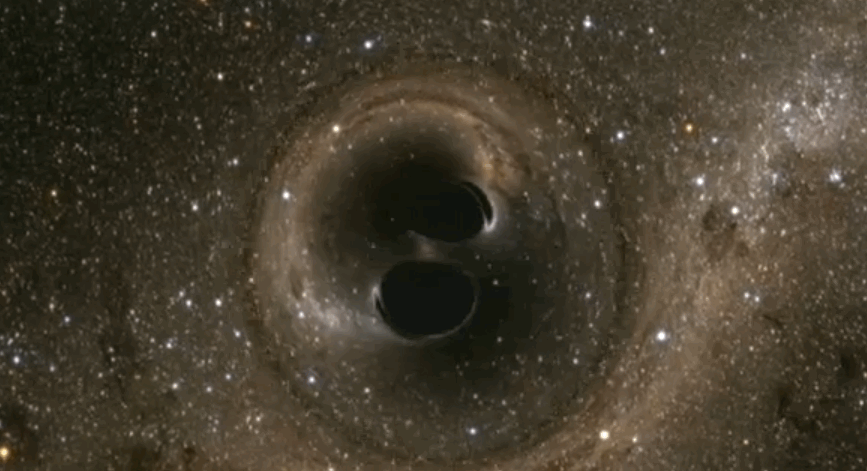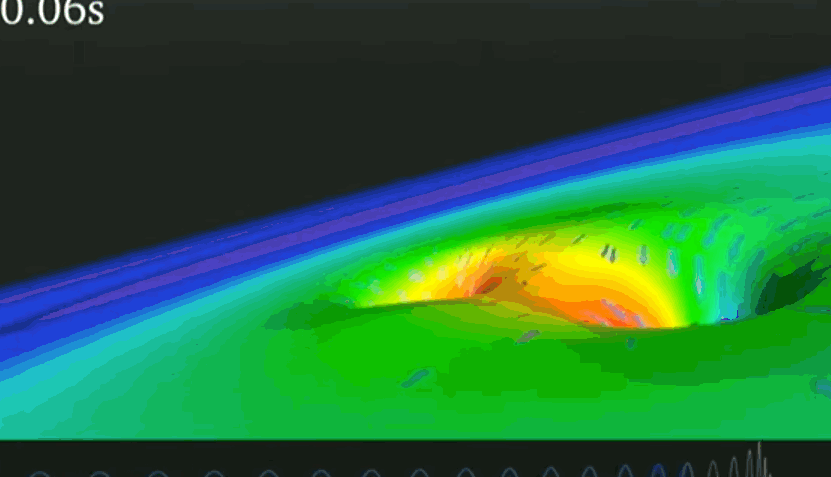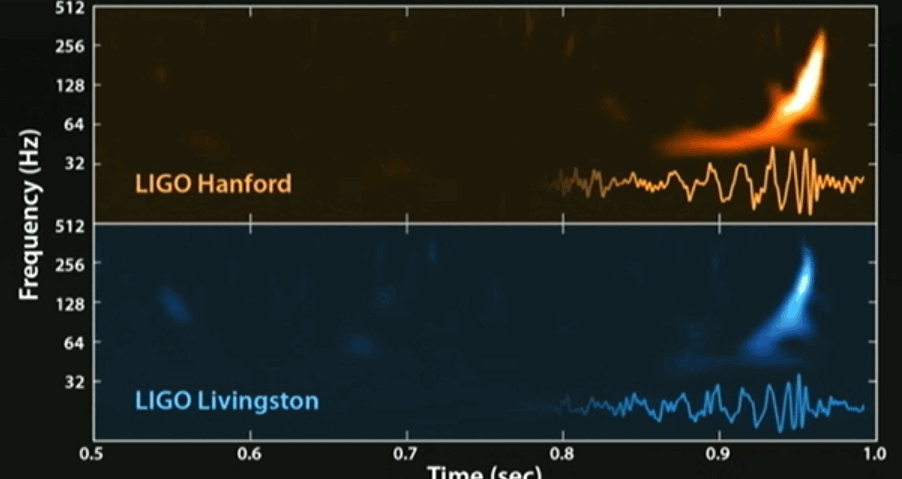Today, scientists announced the first-ever gravitational wave detection, and the news is still reverberating around the world.
A 900-person team and the hyper-sensitive Laser Interferometer Gravitational-Wave Observatory (LIGO) was behind the discovery of the waves, first theorized by Albert Einstein over 100 years ago.
But brilliant minds and incredible technology weren't the only things in play.
Two huge black holes circled each other, smacked together, and lost three sun's worth of mass. All of that matter converted into pure energy in a fraction of a second, jolting the fabric of space and sending out huge ripples.
It's likely the most powerful event ever recorded in human history.
"Colliding black holes created a violent storm in the fabric of the universe," Kip Thorne, a theoretical physicist from CalTech and LIGO pioneer, said at today's press conference.
The effects of the merger dramatically warped space and time, sending waves across the known universe:

Thorne likened past observations to watching the ocean on a calm day - the dynamics of the water aren't apparent from the shore.
But a huge storm creating wave action allows an observer to see how the system moves.
"The storm was brief - 20 milliseconds - very brief, but very powerful," Thorne said. "The total power output during the collision was 50 times greater than all the power of all the stars in the universe put together."

This huge power surge then spread out and traveled more than 1.3 billion light-years to Earth.
Fortunately, it arrived right when LIGO was finally advanced enough to register the event's much-weaker influence.
The signal was recorded at both LIGO facilities in Livingston, Louisiana, and Hanford, Washington state, just 7 milliseconds apart from each other.
According to Quanta Magazine, the signal was so strong the researchers thought it was an error:

NSF
The signal spikes from the Louisiana and Washington LIGO facilities.
And if all this wasn't exciting enough, it's the first time astronomers have ever observed a binary black hole system. LIGO scientists said that the incredible discovery will open up a whole new field of astronomical research.
They're just getting started. Five more LIGO-like research facilities are either under construction or planned across the world.
LIGO is currently at only a fraction at its potential sensitivity, and the new gravitational-wave observatories will allow scientists to better triangulate the location of future events in the sky.
Thorne and his colleagues expect that they'll be picking up gravitational wave signals more frequently and from a greater distance in the near future.